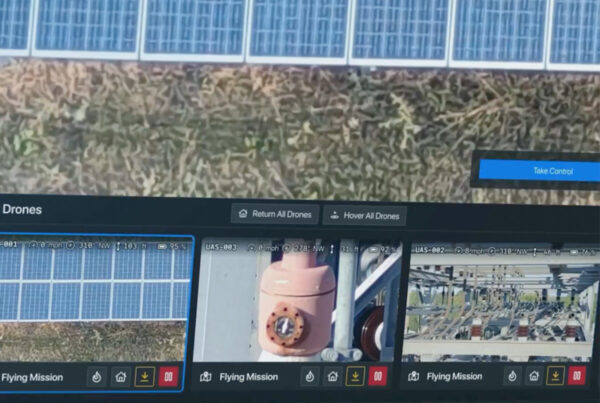
Blockchain was developed to facilitate the business of cryptocurrency, but now utilities can leverage the technology to solve other business problems. Marrying Blockchain with edge computing could be the next step forward for utilities.
But what happens if another new technology, such as edge computing is added to the mix? In Blockchain linking business challenges and solutions for utilities, we promised to take a deep dive into analytics at the edge and blockchain.
You may remember that blockchain is a shared, encrypted, “distributed ledger” maintained by a network of computers. A blockchain synchronizes transactions from initiation to completion for data protection.
Edge or mesh computing “places applications, data and processing at the logical extremes of a network rather than centralizing them. Placing data and data-intensive applications at the edge reduce the volume and distance that data must be moved.”[i] For example, the latest drones don’t need to be connected to the internet to detect images. Drones can use embedded chips that employ AI to do the work.
Edge computing is often mentioned in the context of utilities, based on their distributed infrastructures with a lot of devices at the edge. With smart meters came lots of discussion about data volumes and latency of smart meter communications. Now meter data handling is routine, but meter volumes pale in comparison to the communication “pipes” needed to deliver near-real-time grid operations data, including customer-owned asset data, to a central location for analysis.
Intuition says….
At Itron’s Idea Lab, Lucas Scheidler posited a use case where analytics at the edge paired with blockchain could provide value to utilities’ demand response programs. Remember, one of the features of blockchain is “smart contracts.” Local validation algorithms embedded into a smart meter or another edge device could be used to ensure that contractual commitments to deliver demand response check out against the net premise meter reading. For determining savings achieved by energy efficiency programs, this set-up could also eliminate the labor-intensive work of evaluation, monitoring, and verification, providing that the meter uses standards-based algorithms approved by regulators.
Another use case is peer-to-peer energy sharing. Utilities were not the first companies to look at blockchain for energy sharing. That was the work of start-ups like L03, PowerLedger, and Power2Peer. Yet, Avista took the plunge into an R&D project to explore how blockchain paired with edge computing could facilitate a micro-transactive grid which allows energy consumers/prosumers to trade energy/energy services with adjacent consumers/prosumers and the distribution grid.
Here’s how energy sharing might work to support account settlement in a community microgrid populated by different building owners/operators: when the microgrid needs load reduction at a certain time, it signals the need to building operators and what it is willing to pay for the reduction, based on a previously agreed upon contract. The building signals whether it will participate and reduces load at the specified time. Once that period has passed, it is necessary to verify that the action was taken (i.e., the load reduced), in the specified amount at the specified time and to settle accounts among participants. Edge analytics does the verification, while Blockchain speeds up account settlement. This would work as well for a call for power to buildings with energy resources (e.g., solar PV or energy storage).
There are still a lot of pieces to be worked out. For example, for very sophisticated applications, a smart meter with enough computing capacity to perform required analytics could exceed the amount of power that a smart meter is permitted to draw. It will be interesting to see whether the new partnership between Landis & Gyr and load disaggregation software provider Sense, results in embedding Sense’s analytics in Landis & Gyr meters.[ii] Blockchain is still, in many respects, immature in this context. Details need to be worked out on how it would integrate with smart edge devices.
[i] IEEE’s definition of edge computing
[ii] Electric smart meters draw from the grid and end up as line losses. What they consume is not billed to the customer as behind the meter consumption.
Jill Feblowitz is President of Feblowitz Energy Consulting, where she helps companies in the energy ecosystem with innovation. Ms. Feblowitz has over 30 years in the business, starting with watts (as an electrician) and moving to MW (as a consultant and IT analyst), providing advice on business, regulation and technology. She has a historical perspective as well as a keen sense of industry game-changers – renewables, distributed energy resources, storage, EVs, smart grid and information/control technologies (Big Data, analytics, edge computing, AI/machine learning, robotics, and more). During her long work history, she has learned how critical analytics are to industry performance.














